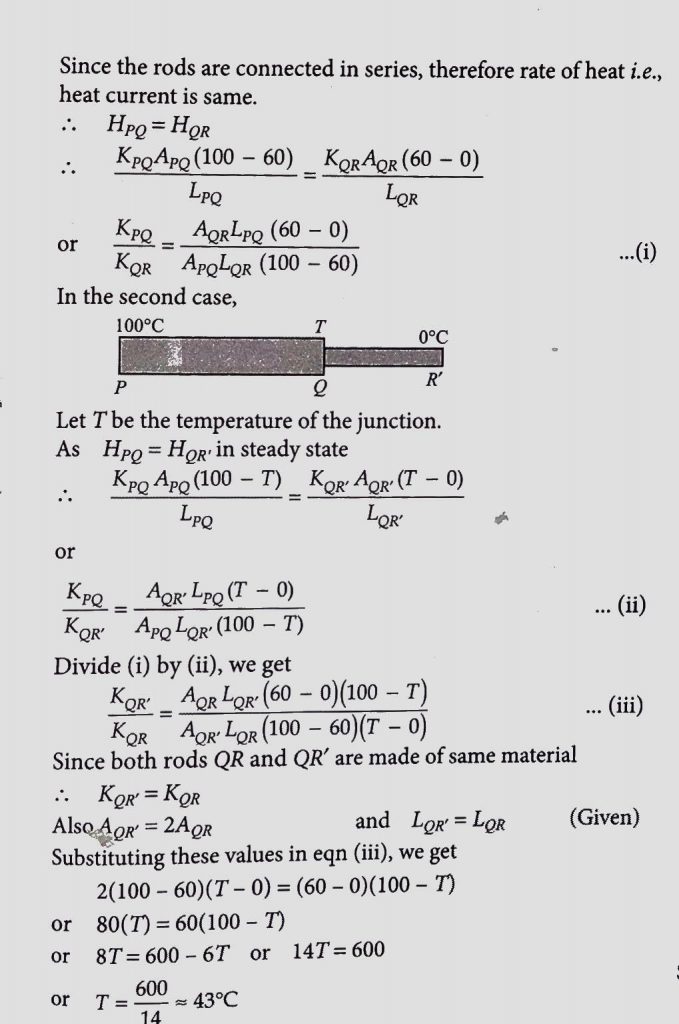Two metallic rods PQ and QR of different materials are joined together at the junction Q (see figure). It is observed that if the ends P and R are kept at 100^o C and 0^o C respectively, the temperature of the junction Q is 60^o C, there is no loss of heat to the surroundings. The rod QR is replace by another rod QR ′ of the same material and length (QR = QR′ ). If the area of cross-section of QR′ is twice that of QR and the ends P and R ′ are maintained at 100^o C and 0^o C respectively, the temperature of the junction Q will be nearly


